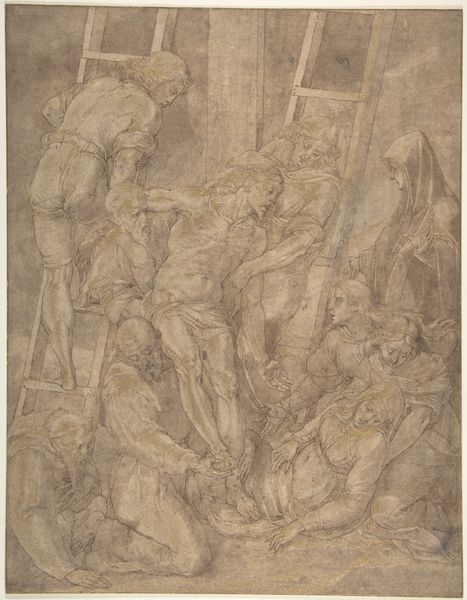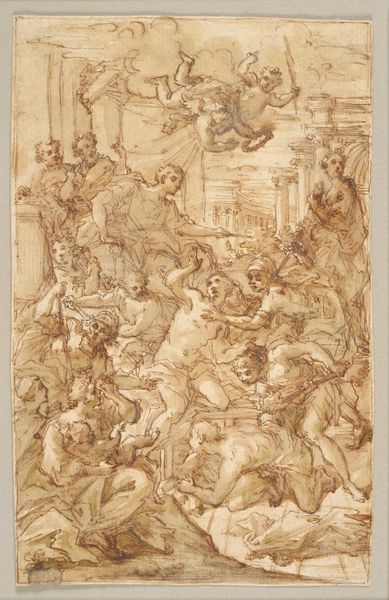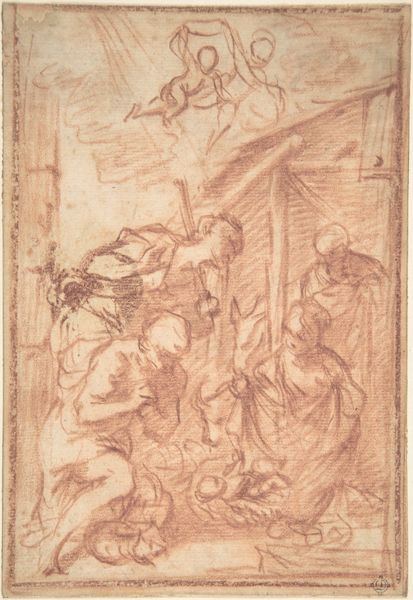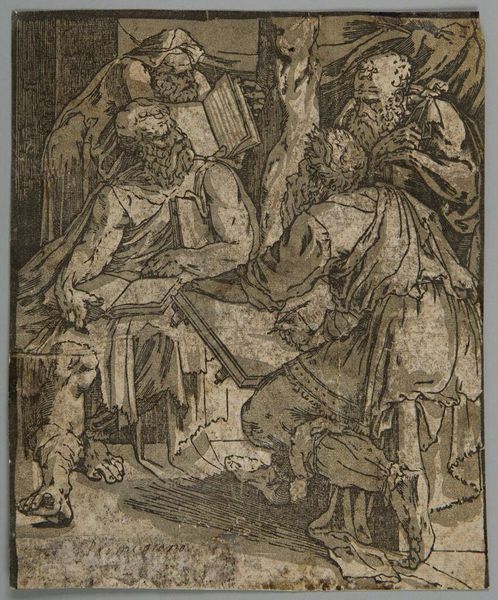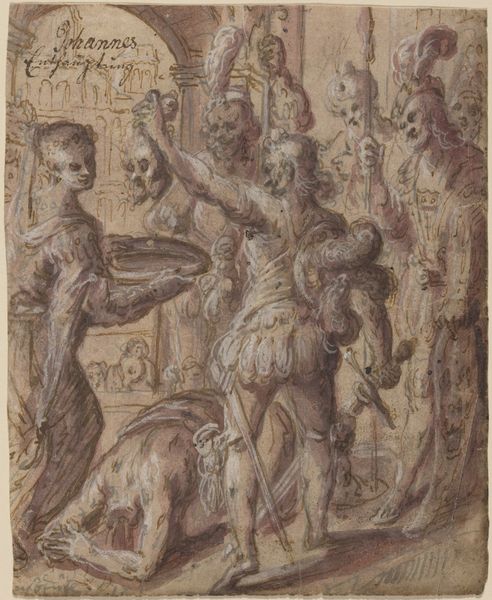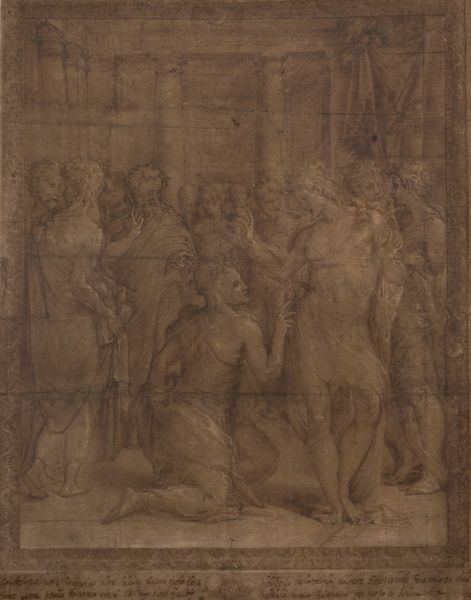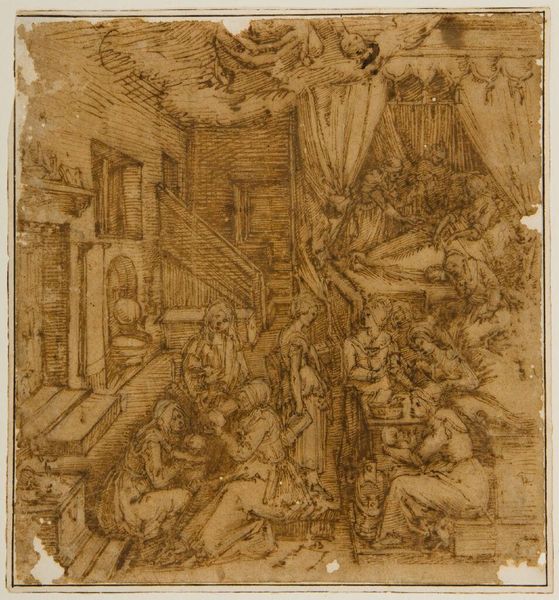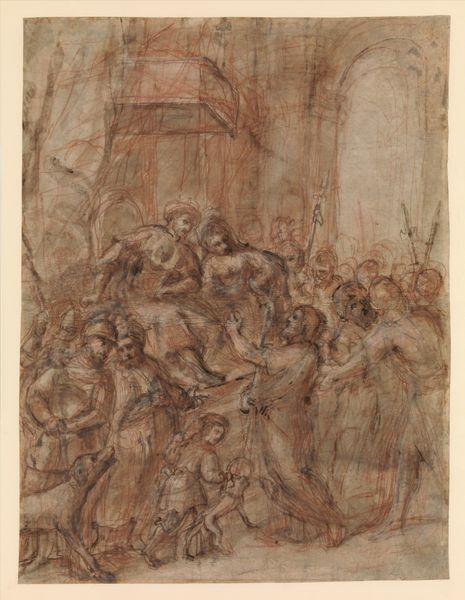
Deposition, with Saint Francis of Assisi and Another Male Saint (Stephen?) c. 1576
0:00
0:00
drawing, print, gouache, paper, ink, chalk, pen, black-chalk
#
drawing
# print
#
gouache
#
mannerism
#
figuration
#
paper
#
11_renaissance
#
oil painting
#
ink
#
chalk
#
pen
#
watercolour bleed
#
history-painting
#
black-chalk
Dimensions: 372 × 234 mm
Copyright: Public Domain
Curator: This drawing is entitled “Deposition, with Saint Francis of Assisi and Another Male Saint (Stephen?)”, created circa 1576 by Simone de Magistris. It employs pen, ink, black chalk, and gouache on paper. Editor: What immediately strikes me is the precariousness of the moment. The figures are rendered in dynamic poses, crowded around a ladder and cross, emphasizing the instability and the delicate act of lowering Christ’s body. The warm tones add a certain gravity. Curator: Precisely. De Magistris, working within the Mannerist style, was deeply involved in the artistic and religious climate of his time. The late Renaissance period was fraught with religious and political upheaval, significantly influencing artistic expression. This drawing highlights the social and spiritual dimensions of the deposition narrative. Editor: The inclusion of Saint Francis is particularly interesting. His presence signals themes of empathy and human connection to divine suffering, which resonated powerfully during periods of social change. The viewer is invited into an emotional and psychologically fraught moment. What is Saint Francis’ role at this time? Curator: Well, his inclusion certainly adds a layer of meaning. St. Francis was experiencing quite a resurgence in popularity in the late 16th century. By inserting him here, de Magistris makes explicit the devotional function of the image, reminding viewers of the need for personal piety and active engagement with the suffering of Christ. Notice, too, the compositional debts the work owes to centrally Italian artists. Editor: Absolutely, the pyramidal arrangement of figures directs our gaze, amplifying the emotional impact of the scene. There’s almost a visual tension mirroring the tension felt by those lowering the body. What always stays with me when viewing this scene, is not just its symbolic power, but its deeply felt humanity. It serves as a stark reminder of mortality, devotion, and the shared human condition. Curator: Yes, looking at the museum records we know it would’ve been intended to be made into a print so we, the viewer, should see that and its ultimate accessibility to devotion through the printed format. Editor: And through that, our ability to connect with history, and human emotion over time. A poignant work offering an intimate view into both artistic practice and religious sentiment of its era.
Comments
No comments
Be the first to comment and join the conversation on the ultimate creative platform.
